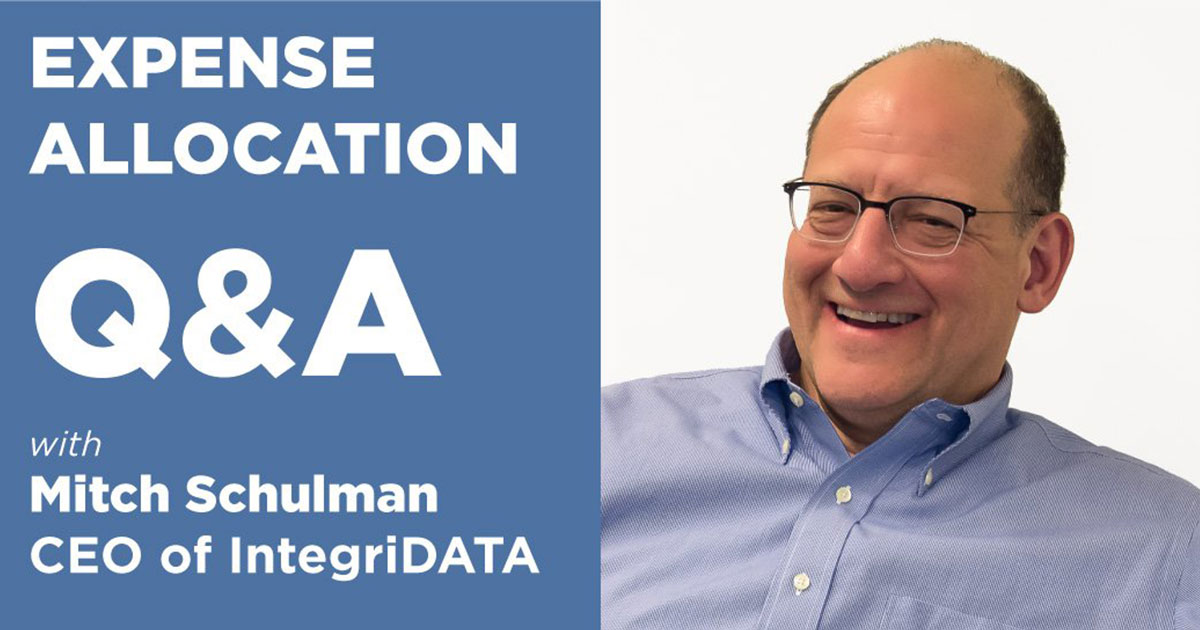Expense Allocation
Expense Allocation Q&A with IntegriDATA’s CEO, Mitch Schulman

Kevin O’Keeffe
February 5, 2020
IntegriDATA CEO, Mitch Schulman, discusses expense allocation challenges and opportunities.
Investors, competition, and increases in cybersecurity and other costs are squeezing general partner margins. Allocating operating expenses is one option GPs can take to improve profitability. But, with investors fixated on fees and the SEC eager to issue misallocation penalties, expense allocation isn’t without risk.
Facing shrinking fees and rising costs, GPs are asking how to allocate expenses without running afoul of investors or the SEC.
IntegriDATA has helped investment managers allocate expenses with its expense allocation software, EAS, since 2016. Kevin O’Keeffe spoke with IntegriDATA’s CEO, Mitch Schulman, to discuss expense allocation challenges and what steps GPs can take to meet investor and SEC expectations.
As the SEC continues to focus on expense allocation, what are the biggest challenges fund managers face?
Fund managers struggle in a few areas. First, is insufficient data on what expenses are and are not allowed to be allocated by fund. Second, is the complexity of allocating expenses, which increases as GPs grow; allocations become more complex as new funds are onboarded, eventually overwhelming manual processes. Last is data and process fragmentation. Allocation data lives throughout the firm, often across multiple systems. All that data must be aggregated, allocated, and the results booked back to the general ledger.
LPA language is often ambiguous. What exercises do you recommend firms take when building an allocation policy?
Compliance should start with the basics. Evaluate each fund agreement and document expenses that can and can’t be allocated in an “expense legal matrix.” A best practice is to build your legal matrix around business purpose and expense type combinations. Using expense type and business purpose, or the reason why an expense was incurred, allows firms to manage fund expense allowability with more flexibility and granularity. For example, a legal expense type may be allowed for due diligence business purposes but not fund organization. A strong legal matrix is the foundation of a good allocation policy and the first step towards automation.
**Even with a robust expense policy in place, don’t firms still run the risk of misallocating expenses? **
Yes, human error is inevitable with any manual process – this is where allocation software comes in. Initially, legal matrixes were used to translate LPA language into guidelines for accounting, but, using allocation software, they can also be used as the basis for automated allocation logic. Allocation automation is key to compliance because it ensures allocations are always executed to LPA terms. In an allocation system, each expense is programmatically evaluated against fund expense allowability rules. This eliminates the risk of misallocation as any potential error is automatically identified and correctly allocated to the proper fund or management company. With automated allocation rules in place, Compliance can be confident the Accounting team is always allocating according to policy. Better yet, if Compliance, investors, or auditors have a question, a comprehensive audit trail makes it easy to answer.
**Expense allocation is notoriously data intensive. We discussed how allocation software solves for calculations, but what about data fragmentation? **
Data fragmentation is one of our client’s biggest challenges as the data required to allocate an expense spans multiple databases or spreadsheets. First is the expense itself, which could be an invoice from an AP system, an expense from a T&E system, or compensation costs from an HR system. Next, is reference data, like deal code, lifecycle, strategy, and employee. Then, there’s the dynamic metrics used to determine pro-rata share, which could be anything from AUM or NAV to employee headcount. And this doesn’t include where the allocation results need to be booked. As you can imagine, that’s a lot of data for Excel or a proprietary application to handle. To be successful, an allocation platform must be more than a calculator. It should integrate with the GP’s infrastructure, acting as an assembly line with raw data coming in and allocation results going out.
Besides productivity and profitability gains, are there other benefits to automating expense allocation?
Yes. It certainly helps when investors are preforming due diligence and evaluating funds to invest in. When attracting capital, a transparent expense policy paired with a system to ensure the policy’s execution is a clear differentiator. Our clients have told us expense disclosure is top of mind and investors want to work with funds that can provide details on their expenses and how they are shared. Lastly, having a centralized database of allocation history makes audit season much smoother.
***
Thanks for reading. To learn more about expense allocation automation, read the white paper or visit the EAS product page.